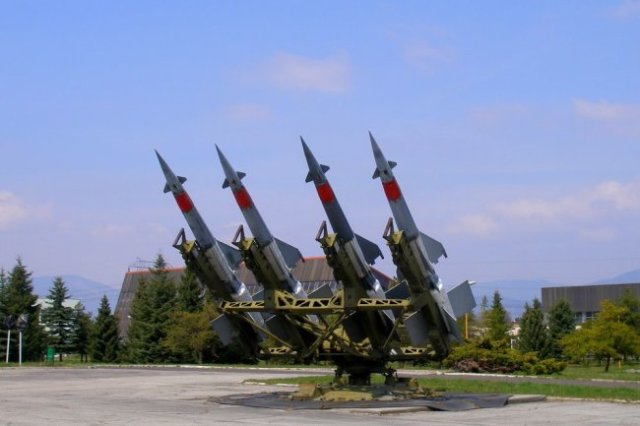60 years ago, the S-125 short-range anti-aircraft system was adopted. It was a response to the changed tactics of the Air Force and is designed to deal with low-altitude high-speed targets.
After the war, the bombers received jet engines and climbed to heights inaccessible to anti-aircraft artillery. On the ground, long-range radars and interceptor missiles were urgently invented - so effective that by the mid-50s, the Air Force was forced to change tactics. Instead of escaping in the stratosphere from a C-75 or Nike Hercules missile, the bombers began to fly at supersonic speed over the ground, passing through the areas of responsibility of anti-aircraft divisions before they had time to prepare. New anti-aircraft systems were needed, capable of tracking low-altitude targets and firing close, but quickly.
In November 1955, the head of KB-1 Alexander Raspletin set the task: a system for intercepting supersonic targets at altitudes from 100 to 5000 meters at a range of 12 km. All system components must be transportable.
The designers widely used the technologies of the successful S-25 and S-75. The antennas of their radars were turned in a special way so that they did not pay attention to the underlying surface. Installed an automatic start system: the missiles were launched as soon as the target entered the target area. The B-600 missile has naval roots - it was designed for the ship's air defense system "Wave", but then adapted for the land, because the missile invented specifically for the S-125 was unsuccessful. But the B-600, the first solid-fuel missile, flew fast and hit accurately. Supersonic targets maneuvering with overloads of up to 4 units, it destroyed at an altitude of up to 7 kilometers, subsonic and more maneuverable-starting from a kilometer. For adoption, the probability of hitting the target with two missiles was brought to 0.98.
Thunderstorm of " Phantoms"
The C-125 received its baptism of fire abroad: its appearance in Egypt in 1970 stopped the bombing of civilian objects by Israeli aircraft. A lot of work was also done during the Yom Kippur War - in total, the complexes shot down several dozen American-made Israeli Air Force aircraft.
Invented in Moscow, the complex protected the skies of Tanzania, with its help, the Iraqi anti-aircraft gunners shot down new" Phantoms " - only the Iranian ones. The C-125's finest hour came during the war in Yugoslavia, where the complex, in addition to the F-16, shot down the F-117 attack aircraft, the world's first aircraft made using stealth technology and seemingly invisible to radar. No one else has managed to repeat this achievement so far. Not because the radars got worse, but simply because the opportunity didn't turn up.
The export version of the complex is called "Pechora", it is still produced and used by the armies of more than 30 countries. In 2003, the Russian-Belarusian consortium presented an updated version of the complex on a modern element base with improved characteristics and new missiles.
Anton Valagin


